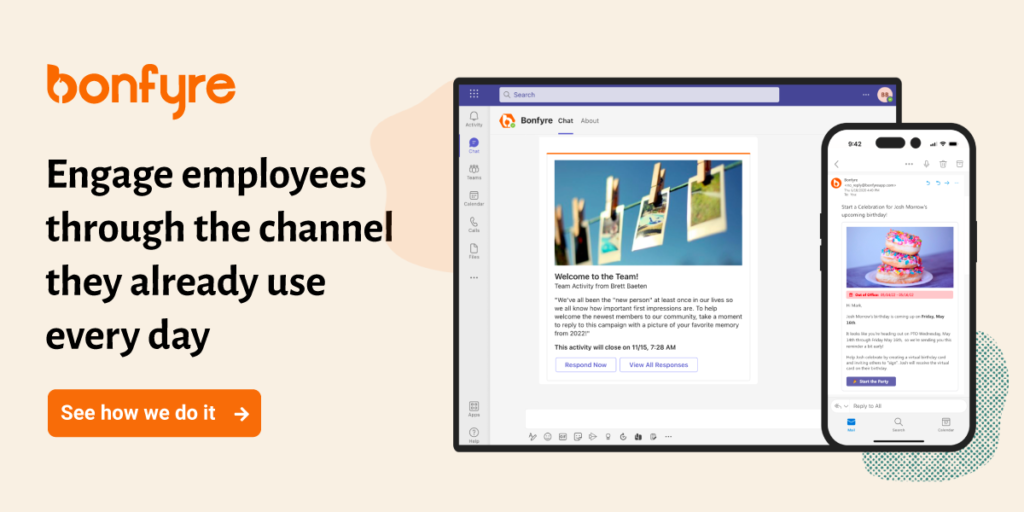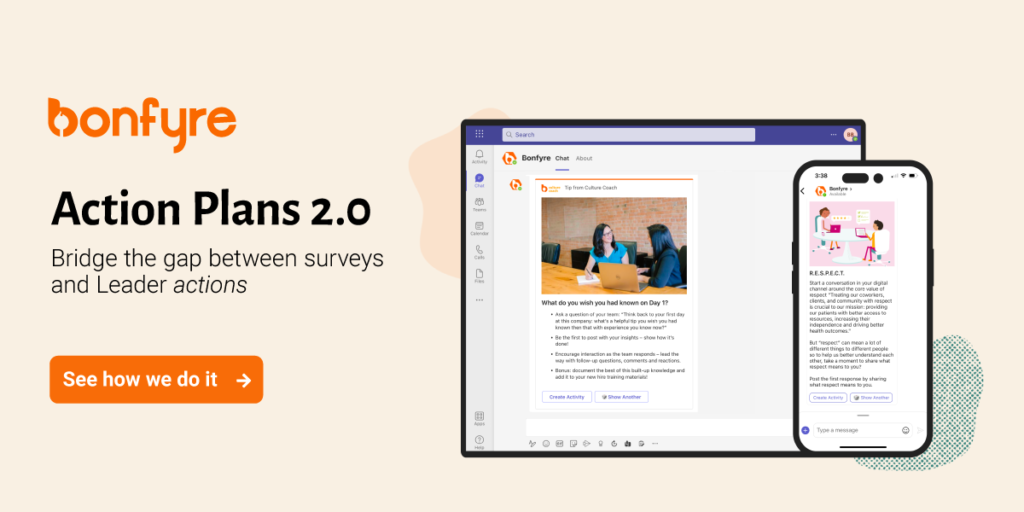Many organizations believe change management is about merely sending communications. However, continuous feedback during change can also make a significant impact on the success of the project.
Change management is more than just a communications plan. Too often, organizations only focus on the communications and miss other essential steps during the transition, which can lead to failure and leaders wondering why employees aren’t accepting the change.
An IBM study found, on average, 41% of projects were considered successful in meeting project objectives within planned time, budget, and quality constraints, compared to the remaining 59% of projects which missed at least one objective or failed entirely.
Two primary reasons change initiatives fail are because they don’t focus enough on frontline managers and the exact actions those managers need to take to achieve the company’s desired business outcomes, according to Gallup. Feedback will set you up for success by ensuring your messages are being received and understood by your frontline employees impacted by the change.
However, a single survey following your project launch isn’t enough. In order to have an accurate view of how well your change project is progressing, it is important to view employee feedback through the lens of both quantitative metrics like adoption rates, email open, and click-through data with qualitative information that helps you keep the pulse on employee sentiment throughout the change process.
Receiving feedback at multiple points during the entire project is essential. By seeking continuous feedback during the change, you can understand the aspects that are challenging to employees, address those issues, and improve your training for better acceptance and retention after the launch.

An agile perspective supports continuous feedback during change
When planning how to approach feedback, I believe an agile perspective is more efficient than waterfall. An agile perspective allows you to receive continuous feedback throughout the entire change process, rather than after the work is finished. This method enables you to adapt processes, communications, and training to fit the end user’s needs before things get too far down the road and past the point of change.
I once worked on a project to roll out a new procurement system. As part of our continuous feedback plan, we hosted a focus group with some super users. Although the process was still in the planning stages, we shared wireframes of the new software with users and walked them through a few scenarios to demonstrate how the tool worked to get feedback. One user asked a question about the purpose of a button in the application, pointing out the name wasn’t descriptive enough. This was incredibly valuable information!
Because of this early feedback, we were able to adjust our training and support documents to ensure clarity before the project was launched to all users. You won’t always be able to change the tool itself, but early feedback can help you adjust how you talk about the tool to ensure end users understand.
Collect continuous feedback during all 3 stages of change
To receive valuable continuous feedback during change, you must first understand the types of input needed at each stage of your project. I break change management into three phases: preparation, management, and retention. Each step requires different types of feedback to ensure success.
1. Feedback during preparation
During the preparation phase of your project, you create baseline metrics to define your measures of success. In doing so, you’ll have baseline data to use throughout the project to gauge how well the change is progressing.
These baseline metrics for change communications may include what key stakeholders, change agents, and employees know about the change right now. As you plan, keep in mind how often your change teams will meet and how often communications will be sent out. Create a dashboard of everything you need to measure throughout the project to support the continuous feedback you will receive during the project.
During this stage you will likely use quantitative data to determine readiness like surveys, change readiness assessments, or other metrics. But don’t forget about the qualitative data you can glean from more informal channels like inter-departmental meetings and conversations employees are having with change agents. If your organization has a centralized project or change management office, it’s essential to get their feedback during this stage as well, to prevent potential change fatigue for end users from too many projects hitting at the same time.
This phase is also the point where you will want to identify sponsors, steering committee members, and change agents that will be involved in collecting, assessing, and implementing feedback throughout the process. It’s also an excellent time to begin identifying super users and even resistors you’ll need for frontline level focus groups and feedback in the next stages.
2. Feedback while managing the change
Continuous feedback during this stage of the change can make or break your entire project. This is often the longest stage of any change management plan, so it’s crucial to plan for feedback at several points during this stage. Some organizations leave feedback until the end of this stage and are left to merely a go/no-go status check. Inadequate feedback at this stage can lead to failure of the entire project.
The first place you need feedback during this phase is during the design stage. You will want at least one survey to assess the progress towards the key metrics for the project you set during the planning stage. It’s also the time for your change impact assessment for end users so you can design strategy and training materials around their unique needs. After these more extensive surveys and assessments, it can be helpful to have additional pulse surveys or focus groups before you enter the testing and implementation phase to ensure you’re still headed in the right direction.
As you enter the testing stage, it’s a wise idea to have another broad survey or focus group to see how the change impacts various groups and how well you are progressing towards your goals. Having a more extensive assessment followed by a few more pulse surveys or check-ins with your change agents will provide valuable continuous feedback during this crucial phase.
Now is the time to call in your super users and resistors for focus groups to gain feedback from both ends of the user spectrum before your project goes live. By understanding how early adopters and stragglers will respond, you can prepare for how the majority of your employees will receive the change.
Communication is vital during this stage. As you send updates regarding the project, you may receive comments or questions from stakeholders and users that can impact and guide your project. Be sure to keep an eye on any trends that arise through conversations in informal feedback channels during this stage of the project.
3. Reinforcement and feedback
Many organizations plan their project through launch and then stop. The time following the launch is crucial. End users are now actively working in the new system or process. This stage reinforces the change and supports employees to ensure their success.
At this stage, the feedback you receive revolves around looking at your metrics and dashboards to ensure the project is achieving the goals set at the beginning. Surveys and usage metrics for any new systems implemented are part of the feedback during this stage. However, this stage of feedback may also incorporate observation.
If your change involves a new system for a call center, you may need to have change agents observe from the back of the room, or sit beside a representative at their desk to understand how well the rollout is progressing and to answer questions as they arise in real time. This kind of feedback may point out blind spots you missed before that you can address through additional training materials or follow-up communications for the most common issues.
By addressing these issues shortly after the launch and providing support, you increase the chance of employees retaining and succeeding with the new system. Feedback after the launch can mean the difference between hitting some or all of your project objectives.
The success of the project is only as effective as the last person to change. The organization is a group of individuals, so success depends on the pace in which all of those individuals can complete the change journey.
By taking an agile approach with a plan for continuous feedback during change, you can increase the chances of having a successful project that is embraced by the end users and viewed as a success by leaders.










